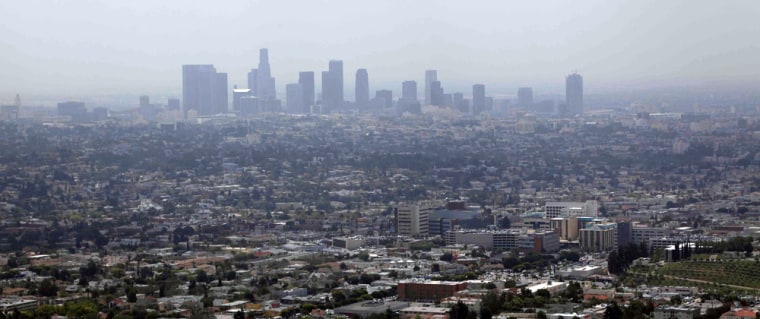The Obama administration said Wednesday it will review a controversial Bush-era smog rule, saying it might have fallen short of scientific recommendations.
The Environmental Protection Agency said it would propose any revisions by December and a final decision by next August.
"This is one of the most important protection measures we can take to safeguard our health and our environment," EPA Administrator Lisa Jackson said in a statement. "Reconsidering these standards and ensuring acceptable levels of ground-level ozone could cut health care costs and make our cities healthier, safer places to live, work and play."
The Justice Department, in a brief filed Wednesday in a federal appeals court, went further, saying that the EPA believes the revision made by the Bush administration does not adhere to federal air pollution law. The brief is part of a lawsuit by environmental groups against the Bush-era rule.
Studies and public comments will be reviewed in making the new assessment, the EPA stated, and the agency "will also review the findings of EPA’s independent Clean Air Scientific Advisory Committee, which recommended stronger smog standards" in 2008.
The Bush regulation was the subject of much controversy because, while it was stronger than the previous rule, it rejected that committee's advice.
EPA advisers wanted tougher rule
In a stern letter to then EPA Administrator Stephen Johnson in April 2008, an EPA advisory panel of scientists expressed frustration that their unanimous recommendation for a more stringent standard was rejected by Johnson.
Johnson lowered the amount of ozone that should be allowed in the air for it to be considered healthy from 80 parts per billion to 75 parts per billion. That meant 345 additional counties nationwide are in violation of the federal air quality standards for ozone, commonly known as smog, and must find ways to reduce the pollution.
Some areas included under the Bush-era standard include Indianapolis and Cleveland's Cuyahoga County in the Midwest; Mobile, Ala., and Jacksonville, Fla., in the South and El Paso, Texas, and Tulsa, Okla., out West.
Some chronic polluters are far above the old limit of 80 ppb — Los Angeles County and a large swatch of southern California, for example, and a long stretch from Washington, D.C., up to New England on the East Coast.
Industry cited economic costs
Electric utilities, oil companies and other businesses had lobbied hard for leaving the smog rule alone, saying the high cost of lower limits could hurt the economy.
The Clean Air Scientific Advisory Committee, created by Congress to advise the EPA, had urged the EPA to set a standard for ozone of between 60 and 70 ppb.
In its letter to Johnson, the committee said it remained convinced that the EPA's concentration level "fails to ... ensure an adequate margin of safety" for the elderly, children and people with respiratory illnesses.
Johnson said he took those recommendations into account, but disagreed with the scientists. "In the end it is a judgment. I followed my obligation. I followed the law. I adhered to the science," Johnson said in a conference call with reporters.
Smog is a respiratory irritant that can aggravate asthma and has been linked to heart attacks.
The EPA has said, based on various studies, cutting smog from 80 to 75 parts per billion would prevent between 900 and 1,100 premature deaths a year and mean 1,400 fewer nonfatal heart attacks and 5,600 fewer hospital or emergency room visits. A separate study suggests that tightening the standard to 70 parts per billion could avoid as many as 3,800 premature deaths nationwide.
Johnson said he did not consider the cost of meeting the new air standard. The federal Clean Air Act requires that health standards for ozone and a handful of other air pollutants not take costs into account.
The Bush-era EPA estimated that compliance with a smog standard of 75 ppb would cost $7.6 billion to $8.5 billion a year and "yield health benefits valued between $2 billion and $19 billion."
"Benefits are likely greater than the cost of implementing the standards," the EPA said in a statement back in March 2008.
